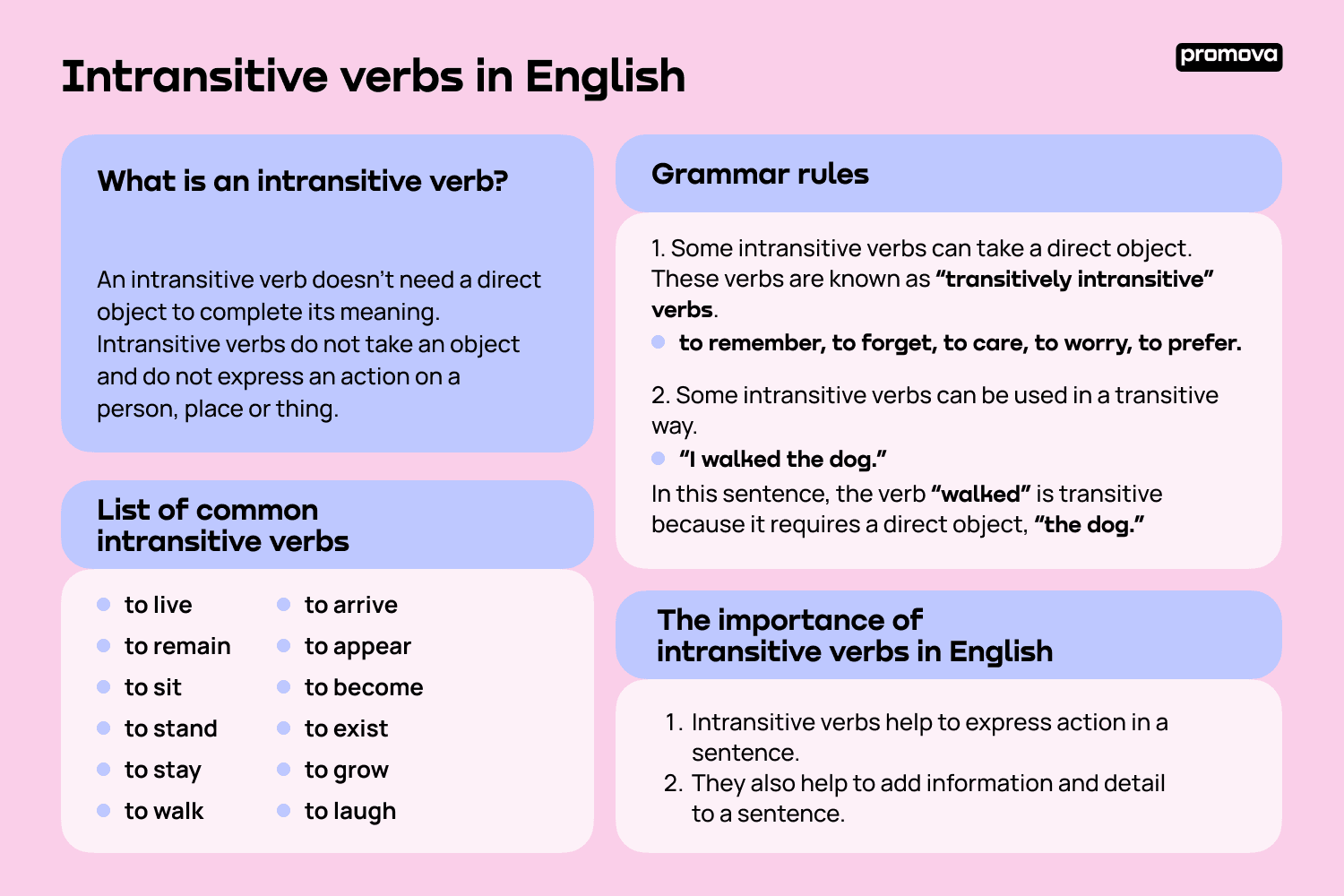Verbs play a crucial role in the structure of a sentence, indicating the action or state of being of the subject. In English grammar, verbs can be classified into transitive and intransitive verbs. While transitive verbs require a direct object to complete their meaning, non-transitive verbs do not. Understanding the usage of non-transitive verbs is essential for constructing grammatically correct sentences.
Non-transitive verbs, also known as intransitive verbs, do not require a direct object to make sense in a sentence. These verbs can stand alone and still convey a complete thought. Examples of non-transitive verbs include “sleep,” “arrive,” “laugh,” and “run.” These verbs do not transfer the action to an object and do not require a receiver of the action.
Examples of Non-Transitive Verbs
Non-transitive verbs often describe actions that do not involve a direct object. For instance, the verb “sleep” does not require an object to complete its meaning. You can simply say, “I sleep” without mentioning what or whom you are sleeping. Similarly, the verb “arrive” stands alone and conveys the action of reaching a destination without needing a direct object.
Another example of a non-transitive verb is “laugh.” You can say, “She laughed” without specifying what made her laugh. The verb “run” is also non-transitive as you can say, “He ran” without mentioning where or why he ran. These verbs demonstrate that the action is complete in itself and does not require an object to complement the meaning.
Non-transitive verbs are essential in constructing sentences that convey actions or states without the need for a direct object. They add variety and depth to sentence structure, allowing for more flexibility in expressing thoughts and ideas. By understanding the role of non-transitive verbs, writers and speakers can enhance the clarity and effectiveness of their communication.
In conclusion, non-transitive verbs play a significant role in the English language by allowing for the expression of actions and states without requiring a direct object. These verbs provide versatility in sentence construction and help convey meaning effectively. By incorporating non-transitive verbs into your writing and speech, you can enhance the impact and clarity of your communication.
